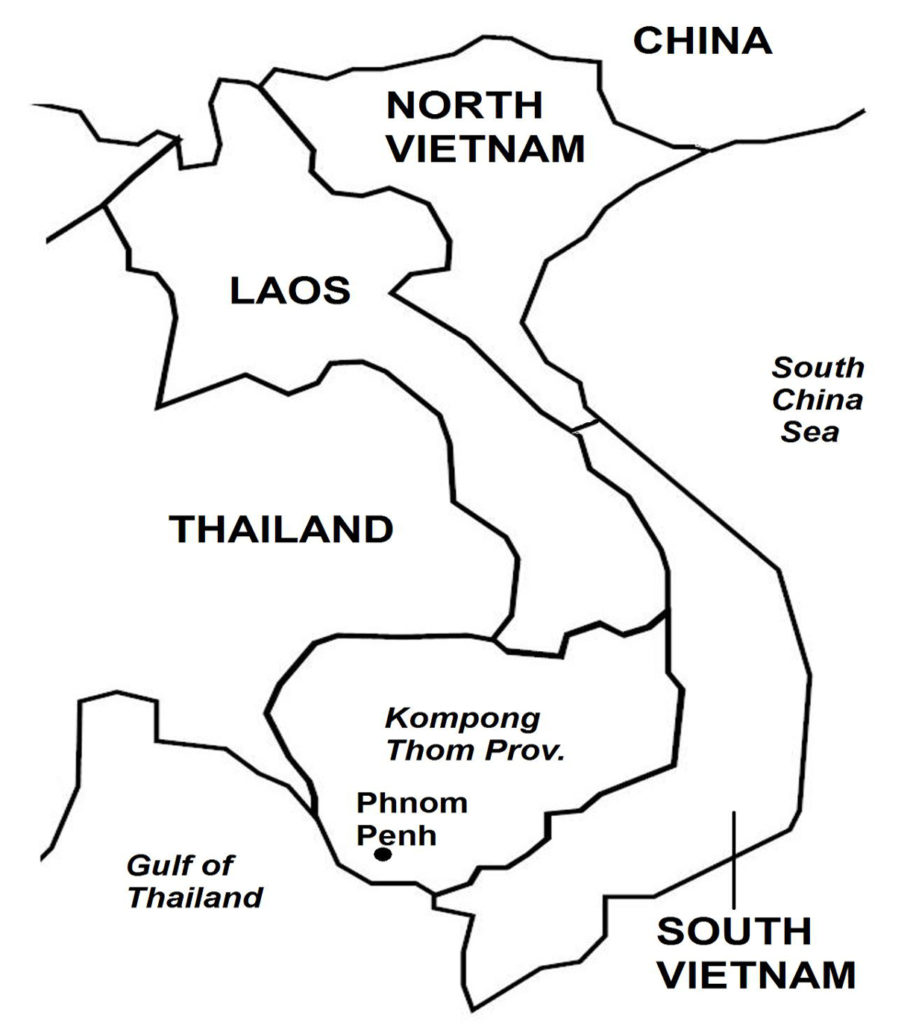On October 9, 1970, the Khmer Republic was proclaimed in Cambodia with General Lon Nol appointed as the country’s head of state. Earlier in March 1970, Lon Nol had led a coup by the National Assembly that voted to oust the reigning head of state, Prince Norodom Sihanouk. The formation of the republic also ended the Kingdom of Cambodia. Lon Nol’s right-wing government was backed by the United States, and sided with South Vietnam against North Vietnam in the ongoing Vietnam War. Lon Nol also reversed Sihanouk’s tolerant policy of allowing North Vietnam to occupy large sections of Cambodian territory in its war against South Vietnam. As such, he demanded that North Vietnamese troops leave the country, and greatly increased the size of his armed forces with large financial support from the United States.
The emergence of the Khmer Republic greatly alarmed North Vietnam, leading to increased North Vietnamese and Viet Cong (South Vietnamese rebels of the National Liberation Front) activity in Cambodian-occupied areas, as well as bolstering support for the Cambodian communist guerrilla group, the Khmer Rouge.
(Taken from Cambodian Civil War – Wars of the 20th Century – Volume 1)

Background Between 1970 and 1975, the U.S.-backed government in Cambodia fought a civil war against the Khmer Rouge, a Cambodian insurgent movement that wanted to establish a communist regime in the country. The Khmer Rouge’s victory in the war marked the rise into power of its leader, Pol Pot, who would engineer one of the bloodiest genocides in history. The civil war formed a part of the complex geopolitical theaters of tumultuous Indo-China during the first half of the 1970s, more particularly in reference to the Vietnam War which greatly affected the security climates of adjacent countries, including Cambodia (Map 1).
In 1970, serious economic problems in Cambodia prompted the military to overthrow Prince Norodom Sihanouk, Cambodia’s ruling monarch, whose faulty policies led to widespread discontent among the people. Prince Sihanouk, although extremely popular and revered as a semi-deity by Cambodians, applied a calculating but dangerous foreign policy of playing up the superpowers in order to get the best deal for Cambodia, and still maintain neutrality.
Years earlier, Prince Sihanouk willingly had received military and financial assistance from the United States. But in 1965, after deciding that communism ultimately would prevail in Indo-China, he opened diplomatic relations with China and North Vietnam. Furthermore, he accepted military and economic support from North Vietnam. In return, he allowed the North Vietnamese Army to use sections of eastern Cambodia in its war against South Vietnam.
